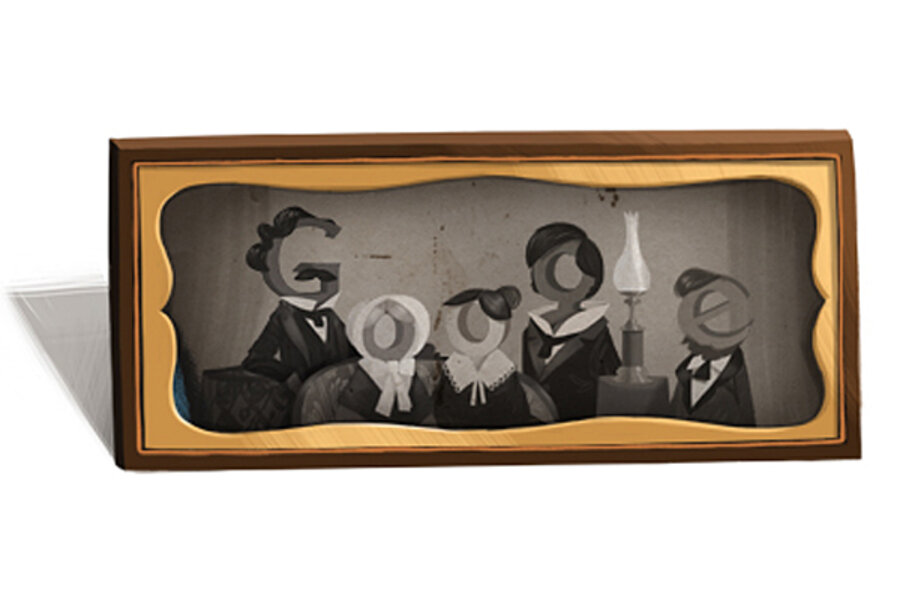Louis Daguerre: Why people never smile in old photographs
Photography pioneer Louis Daguerre would have turned 224 today. Google marked the birthday with one of its classic doodle treatments.
For today's illustration, Google dressed up its name in period clothes and posed the letters for a family portrait. But the scene feels a tad stodgy. The personified letters seem stiff, maybe even bored. This might not be Google's most action-packed image – remember the Freddie Mercury doodle? – but it is a very appropriate nod to Mr. Daguerre.
Back in Daguerre's day, cameras played a very different role. Draftsmen lugged around a big tool called a "camera obscura," which is Latin for "darkened room." These large wood boxes had a lens on one end to let light through. But unlike modern cameras, which use the light to create permanent photographs, these tools cast the light on to a frosted sheet of glass. This allowed sketchers in the 1820s to draw quick outlines of buildings or landscapes. But once they moved the camera, the projection disappeared.
This frustrated Daguerre. There must be a way to create permanent photos, he thought. Others had tried to tackle the problem, including Daguerre's future partner, Nicéphore Niépce.
Mr. Niépce took the world's first known permanent photograph. While the science is miraculous, the image isn't much to look at. This faint "heliograph" captured the light and shadow of a scene outside his window. Because Niépce had only just begun to crack the secrets of photography, this first photo required an eight-hour exposure, long enough that the sunlight reflects off both sides of the buildings.
At this point, photos of humans were out of the question. No person could sit perfectly still for eight hours. But then Daguerre and Niépce teamed up.
They refined the chemistry, shaving down the exposure time to only 15 minutes. Niépce never saw the final product – he died four years into the decade-long project – but Daguerre forged on, introducing the "daguerreotype" in 1839.
"Each daguerreotype is a remarkably detailed, one-of-a-kind photographic image on a highly polished, silver-plated sheet of copper, sensitized with iodine vapors, exposed in a large box camera, developed in mercury fumes, and stabilized (or fixed) with salt water or 'hypo' (sodium thiosulphate)," writes the Metropolitan Museum of Art.
The invention revolutionized landscape photography. Portraits, however, were still a nuisance. Good luck getting kids to sit still for family photos, let alone convincing adults to stare motionlessly for 15 minutes. So, photographers set up some simple rules: No talking. No adjusting. No sneezing. And, just to be safe, no smiling.
Grinning exercises far too many muscles. People would tire out, change their expression, and ruin the daguerreotype. No wonder people in old photos look so serious. They needed to gaze blankly in order for the image to work.
By the 1840s, exposure times bobbed around 10 to 60 seconds, making personal photos much more feasible. Yet even then, heads sagged, backs slouched, and fingers fidgeted. Some professionals developed hidden neck braces that would lock the subject's body into place.
It took decades for photography to become near instantaneous, and for "say cheese" to become part of popular culture.
For more on how technology intersects daily life, follow Chris on Twitter @venturenaut.





